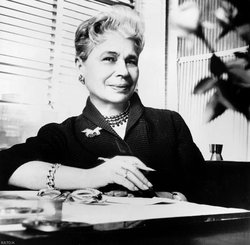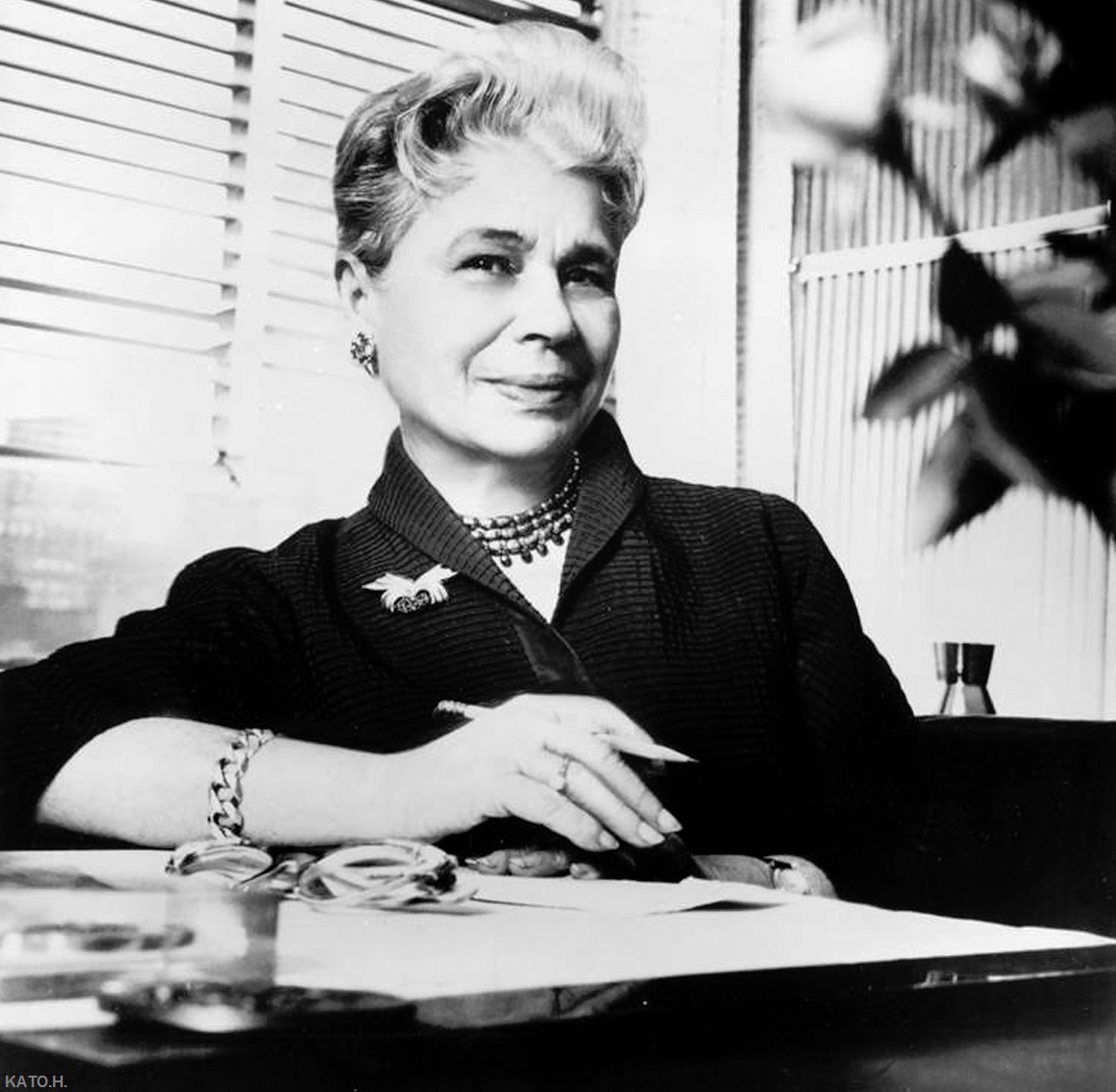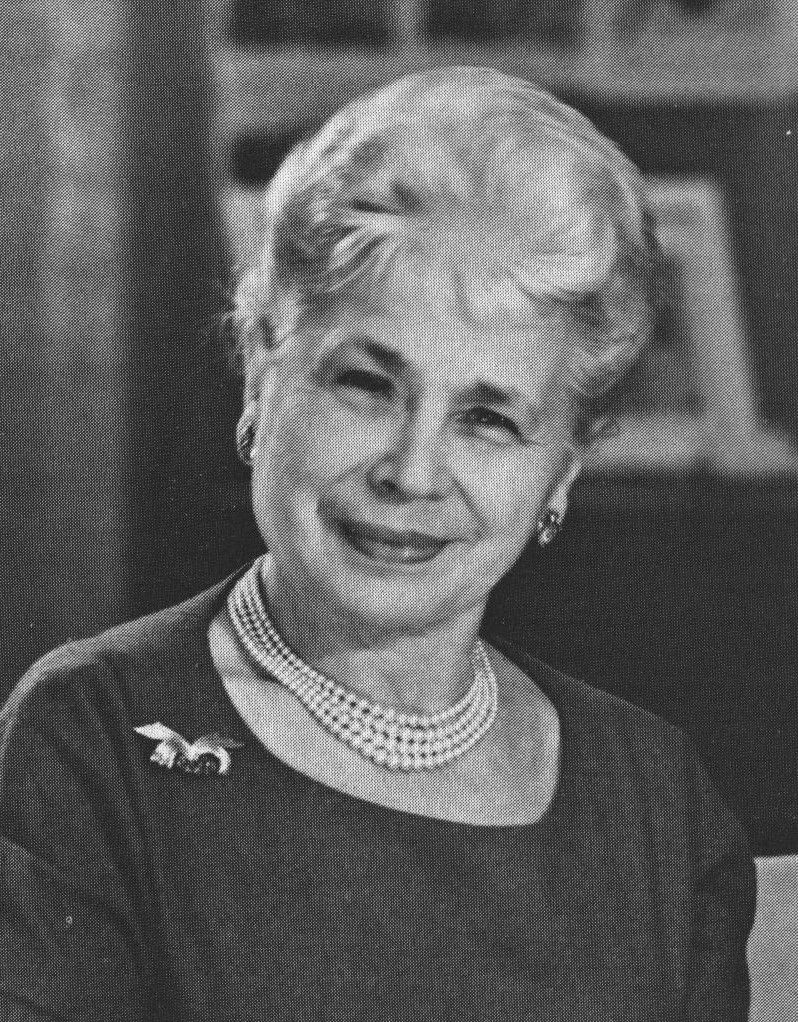Born Ida Kaganovitch in Rakov, Russia, on January 9, 1886 (one source cites 1889); died of pneumonia in New York City on March 29, 1973; eldest of four girls and three boys of Abraham Kaganovitch and Sarah Kaganovitch, who changed the family name to Cohen after immigrating to the United States; married William Rosenthal (a manufacturer and designer), on June 10, 1906 (died 1958); children: Lewis Rosenthal (1907–1930); Beatrice Rosenthal Coleman (b. 1916).
Born in 1886 in Rakov, Russia, near Minsk, Ida Cohen Rosenthal left her family and her homeland at the age of 16 and moved to Warsaw, Poland. There, she worked as a dressmaker while studying mathematics and Russian in the evenings. In 1904, she joined her sister Ethel and immigrated to the United States.
In 1921, along with business partner Enid Bisset, Ida's sewing business boomed during World War I, and soon she and her husband, opened a custom dress shop called Enid Frocks. The popular "flapper" style of the day demanded a flat-chested look, which women achieved by wearing uncomfortable bandeaux. But the Rosenthals disliked the way their dresses fit women with artificially flat chests, and so they developed a new undergarment that would support and accentuate woman's natural figure: two cups connected by shoulder straps and a band that fastened in the back. At first, the partners simply gave the new bras away with each dress they sold. As the popularity of their new undergarment grew, however, they gave up dressmaking altogether and focused exclusively on producing and selling bras. To distinguish their product from the "boyish form" bandeaux, they called their new garment "Maidenform." The new company was called the Enid Manufacturing Company until, in 1930, it became the Maiden Form Brassiere Company to be more identified with its principal product. The firm survived both the Great Depression and Bisset's retirement and, by the end of the 1930s, department stores across the country and around the world were selling Maidenform bras.
The Maidenform bra originated as an accessory to improve the fit of the dresses they sold, but it became so popular that they began to sell it separately. Their product was a major improvement over previous bras, because they used cups that supported and conformed to the breasts, rather than flattening them as had been the Flapper style (known as the "Boyish Form").
Under Ida and her husband's leadership, Maidenform made many other advancements. Maidenform was the first company to sell maternity bras, and William invented a standard for cup sizes. In 1942, Ida received a patent for an adjustable fastener. During this time, Maidenform was also known for its racy newspaper ads featuring underwear models and its advertising slogan "I dreamed... in a Maidenform Bra."
After William's death in 1958, Ida became the company's president and then chairman of the board. She continued working until she suffered a stroke in 1966, after which she stayed on as honorary chairman of the board until her death in 1973. Her daughter, Beatrice, inherited the multimillion dollar family company. Maidenform is now run by Ida's granddaughter, Elizabeth Coleman.
Born Ida Kaganovitch in Rakov, Russia, on January 9, 1886 (one source cites 1889); died of pneumonia in New York City on March 29, 1973; eldest of four girls and three boys of Abraham Kaganovitch and Sarah Kaganovitch, who changed the family name to Cohen after immigrating to the United States; married William Rosenthal (a manufacturer and designer), on June 10, 1906 (died 1958); children: Lewis Rosenthal (1907–1930); Beatrice Rosenthal Coleman (b. 1916).
Born in 1886 in Rakov, Russia, near Minsk, Ida Cohen Rosenthal left her family and her homeland at the age of 16 and moved to Warsaw, Poland. There, she worked as a dressmaker while studying mathematics and Russian in the evenings. In 1904, she joined her sister Ethel and immigrated to the United States.
In 1921, along with business partner Enid Bisset, Ida's sewing business boomed during World War I, and soon she and her husband, opened a custom dress shop called Enid Frocks. The popular "flapper" style of the day demanded a flat-chested look, which women achieved by wearing uncomfortable bandeaux. But the Rosenthals disliked the way their dresses fit women with artificially flat chests, and so they developed a new undergarment that would support and accentuate woman's natural figure: two cups connected by shoulder straps and a band that fastened in the back. At first, the partners simply gave the new bras away with each dress they sold. As the popularity of their new undergarment grew, however, they gave up dressmaking altogether and focused exclusively on producing and selling bras. To distinguish their product from the "boyish form" bandeaux, they called their new garment "Maidenform." The new company was called the Enid Manufacturing Company until, in 1930, it became the Maiden Form Brassiere Company to be more identified with its principal product. The firm survived both the Great Depression and Bisset's retirement and, by the end of the 1930s, department stores across the country and around the world were selling Maidenform bras.
The Maidenform bra originated as an accessory to improve the fit of the dresses they sold, but it became so popular that they began to sell it separately. Their product was a major improvement over previous bras, because they used cups that supported and conformed to the breasts, rather than flattening them as had been the Flapper style (known as the "Boyish Form").
Under Ida and her husband's leadership, Maidenform made many other advancements. Maidenform was the first company to sell maternity bras, and William invented a standard for cup sizes. In 1942, Ida received a patent for an adjustable fastener. During this time, Maidenform was also known for its racy newspaper ads featuring underwear models and its advertising slogan "I dreamed... in a Maidenform Bra."
After William's death in 1958, Ida became the company's president and then chairman of the board. She continued working until she suffered a stroke in 1966, after which she stayed on as honorary chairman of the board until her death in 1973. Her daughter, Beatrice, inherited the multimillion dollar family company. Maidenform is now run by Ida's granddaughter, Elizabeth Coleman.
Family Members
Sponsored by Ancestry
Advertisement
See more Rosenthal or Kaganovich memorials in:
- Find a Grave Rosenthal or Kaganovich
Advertisement







